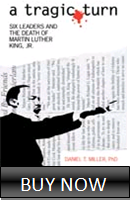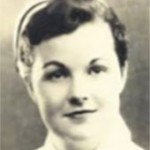
32 days.
It’s generally thought that it takes 32 days to form a habit.
From pronouncement to reality, 32 days have to tick by before you can say a New Year’s Resolution is now part of your daily living.
It took something else 32 days to make a change. 32 days since influenza slipped into Fort Devens, Massachusetts and the daily life of the American nation is numbingly different than before. The question is answered—influenza is here, influenza is bad, influenza is our world until it decides otherwise.
The sickness is everywhere and the actions of people to try to keep up are everywhere, too. They’re reinforcing—the agent of suffering and the agency to limit suffering. The doubts are over and now we find out together how far the hole plunges.
Welcome to October 9, 1918 and the United States of Influenza.
Influenza compels change. Peoria, Illinois shuts down public gatherings of all types. Corpus Christi, Texas takes a similar path. Ohio’s Department of Health recommends the same for the entire state. In Philadelphia the Quartermaster Depot for the War Department states that 1503 workers will be out sick with influenza, with 877 of them absent in key war-manufacturing facilities. The town of Oshkosh, Wisconsin has a new emergency isolation hospital nearly ready to accept patients; a horse-drawn ambulance returns to service as transport for influenza patients. Towns and cities across the United States set new single-day records for influenza-related deaths and new-patient admissions. Within these numbers are smaller stories of still greater danger—more doctors and nurses are falling ill and dying, worsening shortages of medical professionals who can care for staggering caseloads.
Still there are holdouts. In Wisconsin a newspaper reports “views of doctors on how to handle grip don’t agree.” They can’t even agree to use the term “influenza.” The University of Kansas announces a one-week shutdown with the expectation and goal of reopening on the eighth day. The mayor of West Plains, Missouri declares with great fanfare a total closure of all public gatherings regardless of size—but with one exception—the mayor allows “Liberty Loan” meetings to continue in the belief that they are critical to winning the World War. The exception is a bold statement as to priorities.
On this day, women climb some of the steepest mountains made by influenza.
Madame CJ Walker is the most successful African-American businesswoman in the nation. She runs a hair-products and cosmetics company with national scope. Still healthy and free of influenza, she lives in New York City and is trying to maintain business operations in Indianapolis, Indiana. She and her lawyer, Freeman Ransom, based in Indianapolis, conduct long-distance communications to help her employees and their families in Indianapolis cope with the deadly illness. The trust between Walker and Ransom becomes the company’s most valuable resource.
Also in Indianapolis is 33-year old Edna Fletcher. She is a nursing leader at Methodist Hospital and has volunteered to lead a group of student-nurses into the teeth of the deadly disease at nearby Fort Benjamin Harrison. All young women without a lot of experience living and working in crisis conditions away from home, the group formed around Fletcher steps off a train and onto the grounds of the fort. It’s a nightmarish scene with 3000 sick and only a handful of people to help. Fletcher pulls her group together after they’ve left the train. There is no turning back, no way other than straight ahead into the camp hospital, makeshift patient spaces, and infected barracks. As they walk toward the hospital, they pass a tall water tower like the one at Camp Grant in Illinois, scene of yesterday’s tragedy with Colonel Hagadorn.
Not far from the water tower of Camp Grant is the birthplace of Dr. Ruth Tunnicliff. A native of Macomb, Illinois, Dr. Ruth Tunnicliff reports for her first day of duty at Camp Meade in Maryland. She is the successor to Dr. George Mathers, recent victim of influenza. As Mathers’s successor, she is now in charge of completing lab tests and experimentations on diagnoses and serums related to influenza. Dr. Tunnicliff is a civilian contractor who must now take over the leadership role held by the revered Dr. Mathers. Dr. Tunnicliff knows she faces deep-rooted biases as a woman in a profession and place dominated by men.
Anna Hansen lives in North Platte, Nebraska. Her husband works as section foreman for the Union Pacific Railroad and together they have five children. 48 years old, Anna is an extraordinary leader in the Hansen household and a fixture on their ranch north of the small town. She is a skilled rancher as well as parent and organizer of the family home. Her five children and her husband adore her and know that their family, in many ways, revolves around her. It’s this knowledge that makes today so punishing. On this the second day of illness, influenza kills her and wrecks the Hansen home. The feeding of the cattle and horses will not be done until tomorrow.
The center of the circle is empty.
A thought for you on Day 32, April 13, 2020, thirty-two days after President Trump declares Covid-19 a national emergency—water on the plain. I’m thinking about two moments from Day 32. First, we have the relationship between Walker and Ransom in an amazingly successful business. Second, we have the relationship within the Hansen family at the ranch. The stress of an event like influenza in 1918 or Covid-19 in 2020 will test every point in a set of relationships. Those already strong will likely become stronger. Those already weak or shaky will deterioriate quicly and collapse. We see that Walker and Ransom knew how to work well together. That strength proved vital in their continued business success. We don’t know about the Hansens. We hope their bonds were sound and solid; they’ll need to be in order to survive a harsh turn of life in a place where harsh living is the norm. We do know that, no matter what, there were mouths to feed—beginning with mouths in the barns and sheds and corrals. They had to do it just to survive. But underneath, left untended, their own suffering could worsen and deepen, much like influenza itself. I hope that as Covid-19 continues to be amongst us you will have the ability to see where the strong relationships are still strong, and where the weak may lie waiting, silently undoing and undermining the good occurring elsewhere. Lean on the strong and the strength. Prepare for the weakness and its effect.

(note to reader—I invite you to subscribe to this series/blog. The purpose of my posting in this series is the purpose of my enterprise at Historical Solutions—to explore the past in a new way that brings new and different value to you, both in the present (this minute) and on the edge of the future (what’s ahead or forward of this minute). The past is everything before now, the totality of all time before the present; history is a set of very small slices of the past that, for a particular reason, have been remembered. If you wish to contact me privately, please do not hesitate to text or call 317-407-3687)







